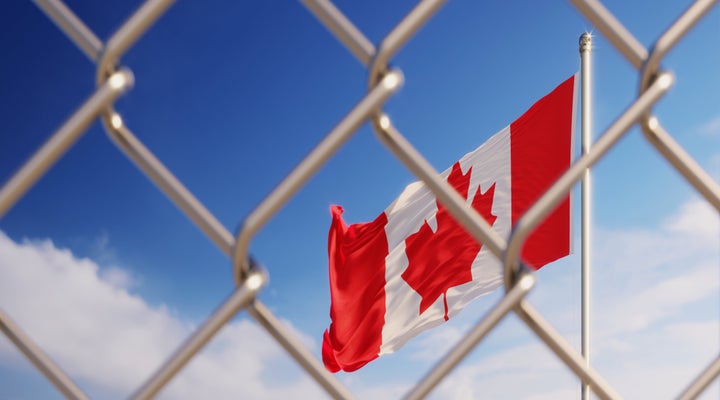
MONTREAL ― Canada will miss its immigration targets by a wide margin this year, and potentially in future years, a disruption that “will reverberate across the economy,” Royal Bank of Canada has warned in a new report.
The federal government had set a record-high target of 350,000 new permanent residents for 2020, up from 341,000 last year, also a record high.
But restrictions on travel meant to slow the spread of COVID-19 have “for all intents and purposes shut down immigration,” RBC senior economist Andrew Agopsowicz wrote.
If the current restrictions stay in place through the summer, the country will fall short of its target by 170,000 people, he predicted.
Watch: Toronto immigrants are making less today than in 1980. Story continues below.
Among the “potential casualties,” Agopsowicz wrote, are industries with labour shortages, the rental and housing markets in urban areas, universities and deficit-laden governments.
“Canada will need a younger and growing population to maintain growth and support the unprecedented expansion of the fiscal deficit that came in response to the crisis,” he wrote.
Without immigration, Canada in recent years would have looked a lot like Japan in the 1990s, the RBC economist argued. That country has struggled with a moribund economy for decades due to a rapidly aging population, running up the developed world’s largest public debt.
A squeeze on the housing market
Agopsowicz noted that the country’s three largest metro areas ― Toronto, Montreal and Vancouver ― would see shrinking populations today were it not for immigrants. That’s because young adults are leaving these cities primarily due to rising housing costs.
“A slowdown in immigrant-related demand for homes could squeeze the rental and housing markets,” Agopsowicz wrote.
That’s what Capital Economics is predicting. It expects Canadian house prices to fall a relatively mild 5 per cent in the crisis, but then stay down “for years” because of reduced immigration.
Trouble on the farm
Canada’s agricultural industry is facing serious pressures due to a lack of temporary foreign workers. Although TFWs were exempted from the travel ban, the number of arrivals was down 35 per cent in March, and down 45 per cent for agricultural workers, the RBC report stated.
One reason for the drop could be that arriving workers have to self-quarantine for 14 days, which might make it less lucrative to come to Canada, Agopsowicz suggested ― even more so if those workers have to self-quarantine again when they get home.
“The agriculture industry already struggles with labour shortages — so additional frictions on this front (are) definitely worrisome,” he said in an email to HuffPost Canada.
“The federal government will need to think carefully over the next little bit how to adapt our immigration system to again start allowing immigrants to flow into Canada.”
- Andrew Agopsowicz, senior economist, RBC
Universities could also suffer, as they’ve grown increasingly dependent on the high tuitions paid by international students.
The number of people entering the country on student visas dropped by 45 per cent in March, the RBC report noted.
But the wild card is how many students return for the fall semester ― especially given many schools are moving to online classes.
If just one-fifth of foreign students don’t show up, the University of Toronto alone will face a $200-million hole in its $3-billion budget, Agopsowicz wrote.
Rising debt
Then there is the question of paying off the massive debt governments and others are taking on in the pandemic. Canada has historically relied on population growth to make its public debt easier to pay over time. But with slower population growth, the country could be headed towards a “fiscal cliff,” Agopsowicz warned.
In a report at the end of April, the Parliamentary Budget Office said the federal government was on track for a $252-billion deficit in this fiscal year, equivalent to 12.7 per cent of the country’s annual economic output. That is by far the largest in comparable records going back to 1966.
The federal Liberals recently announced slightly lower immigration targets, with the 2020 target set to the same level as last year, at 341,000. But the government has not offered a timeline for when restrictions on international travel will be lifted, and any recovery “will depend in part on the course of the pandemic,” Agopsowicz wrote.
“The travel restrictions are a necessary response to this crisis, but we need to keep in mind that long-lasting restrictions to immigration will hurt the Canadian economy in the long run,” he said.
“The federal government will need to think carefully over the next little bit how to adapt our immigration system to again start allowing immigrants to flow into Canada.”
He expects Canada will have to take a “phased approach” to reopening immigration, starting with migrants needed in key areas of the economy that have labour shortages.
“A large influx of immigrants while the labour market is trying to absorb the loss of so many jobs may not be the most prudent.”